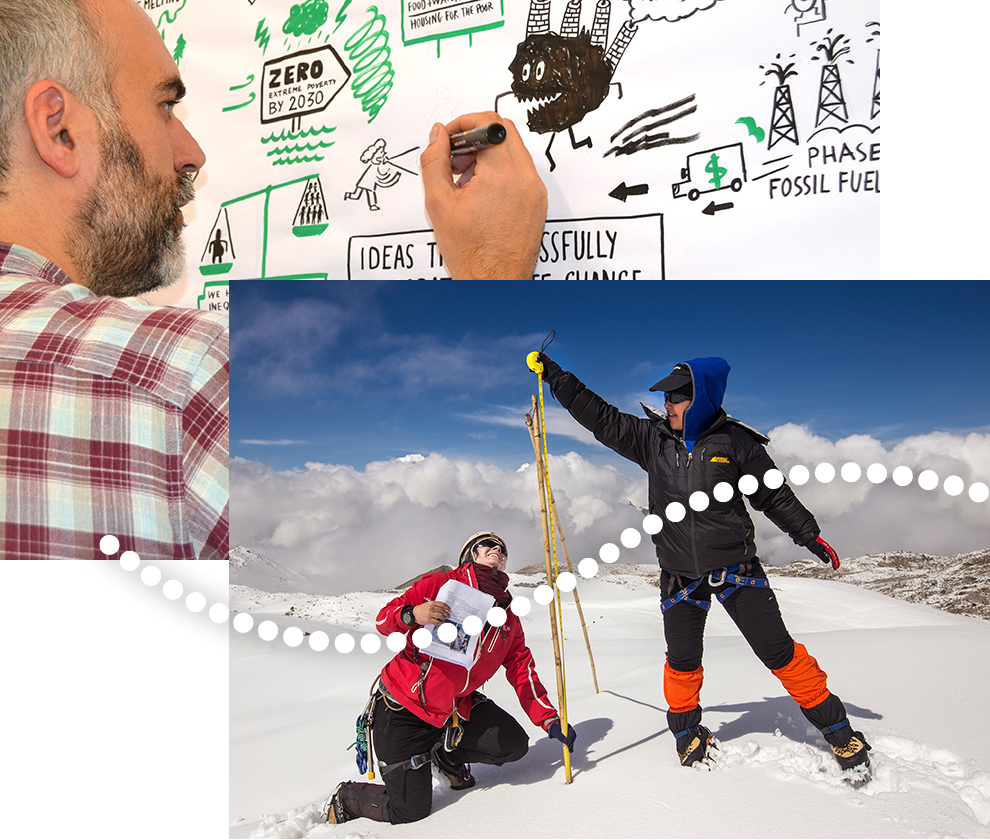Moving towards a growing global discourse on transboundary adaptation

Introduction
Climate change will ultimately affect all countries, and its effects – from droughts to floods – do not respect political borders.
Regional cooperation is needed to manage shared ecosystems and consider the transboundary risk implications of National Adaptation Plans (NAPs) and Intended Nationally Determined Contributions (INDCs).
There is a need to develop transboundary adaptation frameworks and response measures that build upon existing regulatory approaches in international environmental law, and to develop the work of intergovernmental organisations and regional advocacy organisations.
What is transboundary adaptation?
Traditionally adaptation has been implemented at national and subnational levels, often driven by frameworks developed under the UNFCCC.
Transboundary adaptation can be understood as adaptation planning that addresses the dependencies and interdependencies from a systems perspective when assessing risk and when developing options to manage both the rapid and slow-onset impacts of climate change.
*This article is a summary of the briefing note. Download the full document on the right-hand column for much more information
Challenges
Undertaking transboundary vulnerability and risk assessments is complex, resource-intensive and difficult to integrate, and developing transboundary adaptation strategies poses an even greater challenge.
Workshop discussions at a 2012 Nairobi Work Programme (NWP) highlighted some of these challenges:
- Lack of data-sharing and availability
- Weak joint data-management
- Inadequate observational networks
- Lack of consensus on adaptation priorities
- Absense of coordination mechanisms on climate finance for transboundary adaptation
- Continued focus on national-level adaptation due to lack of flexibility in existing transboundary risk management agreements
- Fundamental political barriers such as questions of sovereignty, jurisdiction and responsibility and lack of political will.
Opportunities
- Transboundary cooperation could also support adaptation efforts at the national level by strengthening the capacity to develop and implement adaptation plans
- Enhancing knowledge on adaptation by pooling regional expertise
- Sharing costs for activities like developing climate change scenarios and avoiding negative transboundary impacts
- Knowledge being generated by the NWP and the technical examination process on adaptation among others should be incorporated into the official fora
- Need for economic incentives to enable joint adaptation planning and engagement of the private sector to finance transboundary adaptation.
- If countries could be confident that transboundary risk was being addressed through a suite of regionally agreed adaptation measures, this could provide confidence in terms of de-risking investments involving shared resources.
- Establishing a formal working and technical advisory group under the UNFCCC could then explore mechanisms for facilitating cooperation and coordination between transboundary initiatives and NAPs.
The Way to Action
It is now time to move beyond recognition and towards action to support transboundary adaptation. The GGA is one way of ensuring that the many aspects of adaptation – including the geographic and thematic dimensions – are addressed.
The UNFCCC could play a critical role in supporting transboundary adaptation by encouraging countries to provide information and preparing an annual report on transboundary risks and adaptation.
If Parties include transboundary adaptation in their adaptation communications, then these elements would need to be included in the Global Stocktake.
More discussions are needed to bring the adaptation relevant elements of the Paris Agreement together, and particularly on how to support countries in their transboundary and regional adaptation efforts.
- Adaptation without Borders - Indirect Impacts of Climate Change
- Meeting the global challenge of adaptation by addressing transboundary climate risk
- Introducing the Transnational Climate Impacts Index: Indicators of country-level exposure – methodology report
- Read more about the project Adaptation without Borders on SEIs website here

Comments
There is no contentYou must be logged in to reply.